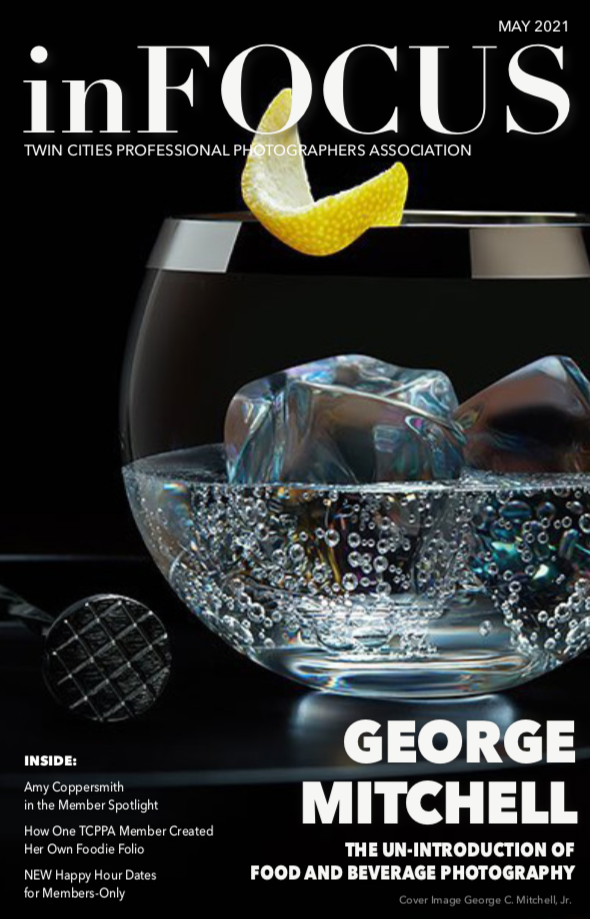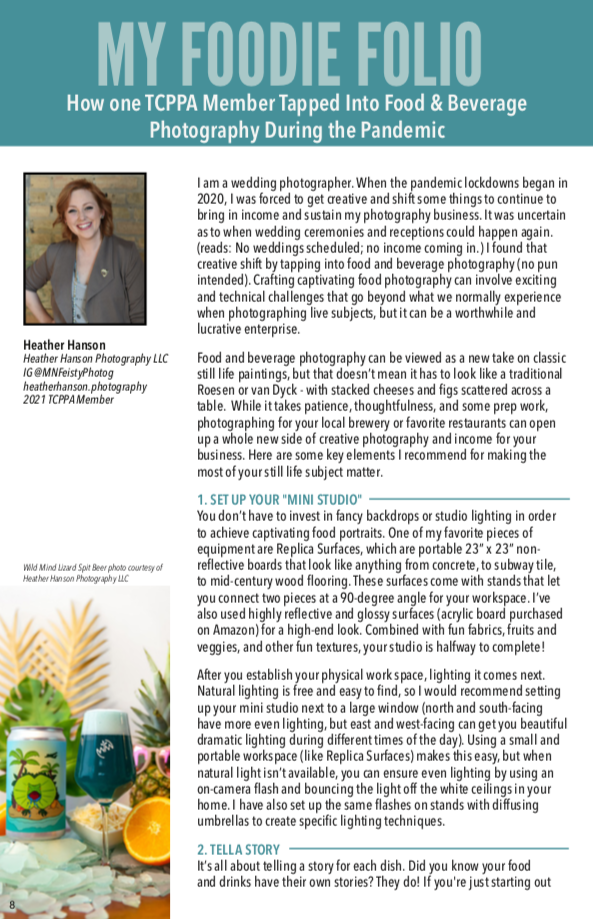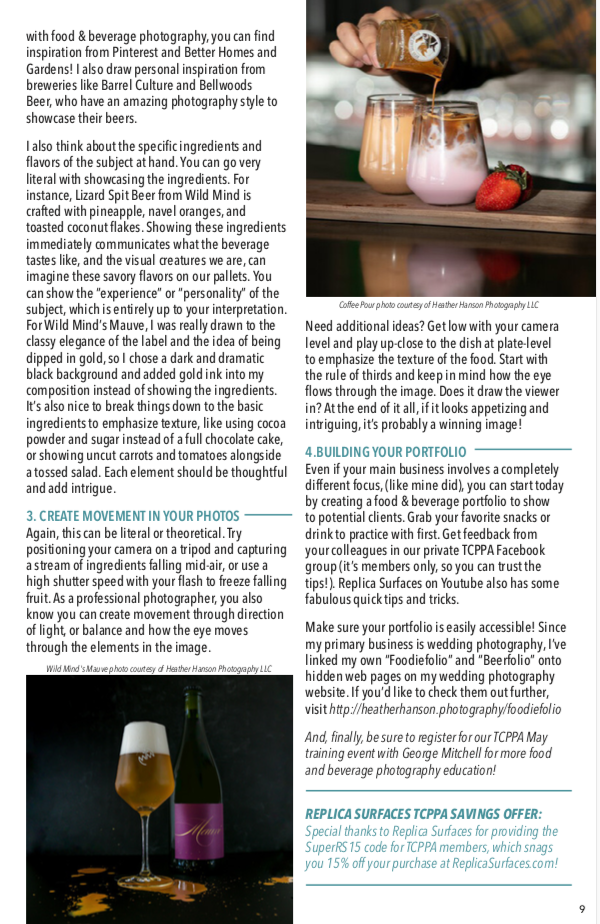Minnesota Food Photography | TCPPA In Focus
Ceviche — Pedro’s del Este restaurant, Hudson, WI.
I am a wedding photographer, through and through. When the pandemic lockdowns began in 2020, I was forced to get creative and shift some things to continue to bring in income and sustain my photography business. It was uncertain as to when wedding ceremonies and receptions could happen again. (reads: No wedding scheduled; no income coming in.) I found that creative shift by tapping into food and beverage photography (no pun intended). Crafting captivating food photography can involve exciting and technical challenges that go beyond what we normally experience when photographing live subjects, but it can be a worthwhile and lucrative enterprise!
Food and beverage photography can be viewed as a new take on classic still life paintings, but that doesn’t mean it has to look like a traditional Roesen or van Dyck -- with stacked cheeses and figs scattered across a table. While it takes patience, thoughtfulness, and some prep work, photographing for your local brewery or favorite restaurants can open up a whole new side of creative photography. Here are some key elements I recommend for making the most of your still life subject matter.



Pistachio Croissant — Wild Grind Coffee shop, Minneapolis, MN
Set up your “mini studio.” You don’t have to invest in fancy backdrops or studio lighting in order to achieve captivating food portraits. One of my favorite pieces of equipment are Replica Surfaces – portable 23” x 23” non-reflective boards that look like anything from concrete, to subway tile, to mid-century wood flooring. These surfaces come with stands that let you connect two pieces at a 90-degree angle for your workspace. I’ve also used highly reflective and glossy surfaces (acrylic board purchased on Amazon) for a high-end look. Combined with fun fabrics, fruits and veggies, and other fun textures, your studio is halfway to complete!
After you establish your physical work space, lighting it comes next. Natural lighting is free and easy to find, so I would recommend setting up your mini studio next to a large window (North and South Facing have more even lighting, but East and West facing can get you beautiful dramatic lighting during different times of the day). Using a small and portable workspace (like Replica Surfaces) makes this easy, but when natural light isn’t available, you can ensure even lighting by using an on-camera flash and bouncing the light off the white ceilings in your home. I have also set up the same flashes on stands with diffusing umbrellas to create specific lighting techniques.Tell a story. It’s all about telling a story for each dish -- did you know your food and drinks have their own stories?? Yes, starting out you can use inspiration from Pinterest and Better Homes and Gardens! I also draw personal inspiration from breweries like Barrel Culture and Bellwoods Beer, who have an amazing photography style to showcase their beers.
Consider the specific ingredients and flavors of the subject at hand – you can go very literal in showcasing the ingredients to carry your message. For instance Lizard Spit Beer from Wild Mind is crafted with pineapple, navel oranges, and toasted coconut flakes. Showing the ingredients immediately communicates the taste a consumer can expect. Alternatively, you can show the “experience” or “personality” of the subject, which is entirely up to your interpretation. For Wild Mind’s Mauve I was really drawn to the classy elegance of the label and the idea of being dipped in gold -- so I chose a dark and dramatic black background and threw gold ink around instead of showing the ingredients. It’s also nice to break things down to the basic ingredients to emphasize that texture -- like using cocoa powder and sugar instead of a full chocolate cake, or showing uncut carrots and tomatoes alongside a tossed salad. Each element should be thoughtful and add intrigue.Create movement in your photos. Again, this can be literal or theoretical. Try positioning your camera on a tripod and capturing a stream of ingredients falling mid-air, or use a high shutter speed with your flash to freeze falling fruit. As a professional photographer you also know you can create movement through direction of light, or balance and how the eye moves through the elements in the image.
Mauve — Wild Mind Artisan Ales, Minneapolis, MN
Need additional ideas? Get low with your camera level and play up-close to the dish at plate-level to emphasize the texture of the food. Start with the rule of thirds and keep in mind how the eye flows through the image. Does it draw the viewer in? At the end of it all, if it looks appetizing and intriguing, it’s probably a winning image!
Seared Squash by Chef Ian Gray — Wild Mind Artisan Ales Food Truck (2020)
So where can you start? Even if your main business involves a completely different focus, you can start today by creating a food and beverage portfolio to show to potential clients. Grab your favorites to practice with first. Get feedback from your colleagues in our private Facebook group (it’s members only, so you can trust the tips!). Replica Surfaces on Youtube also has some fabulous quick tips and tricks.
Finally, make sure your portfolio is easily accessible! I’ve linked my own “Foodiefolio” and “Beerfolio” onto hidden web pages on my wedding photography website if you’d like to check them out further: http://heatherhanson.photography/foodiefolio





